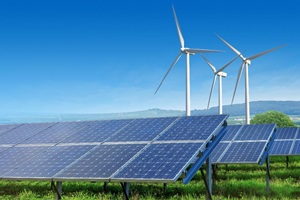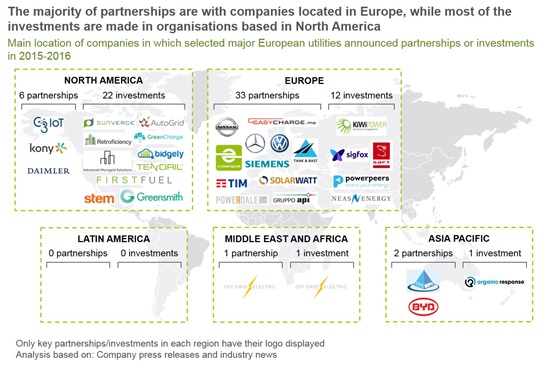- Distributed Energy Resources
- Energy Technologies
- Energy Technologies
- Energy Cloud
- Digital Age
European Utilities Are Moving toward New Energy Platforms at Different Paces: Part 3

The energy industry is experiencing a profound transformation as the sector moves toward more intelligent, more distributed, and cleaner use of energy. Utilities’ traditional business models are being challenged by disruptive firms offering new services that leverage more advanced technology, as described in Guidehouse’s Energy Cloud analysis in its Navigating the Energy Transformation white paper. In the first post of this blog series, I described six new energy platforms underpinning the energy transformation. In the second post, I showed that some European utilities have been more active than others in partnering with, and investing in, companies offering new energy platforms. In this post, I focus on the geographical distribution of activity to show that the majority of partnerships are with companies located in Europe, while most of the investments are made in organizations based in North America. In the next and final post, I will argue that in order to be successful in the transition toward a smarter, more digital energy future, utilities will need to strategically adopt the most relevant new energy platforms.

(Source: Guidehouse, Inc.)
In terms of geographical distribution, while the majority of partnerships are with companies located in Europe, it is worth noting that most of the investments that eight major European utilities have made over the last 2 years are concentrated in North America—and California more particularly (see above figure). This is not surprising, when one considers that most startups offering services in Distributed Energy Resources (DER) Integration were created in California. These include AutoGrid (which raised funds from both E.ON and Total), Stem (in which RWE and Total invested), and Green Charge Networks (acquired by ENGIE). French utilities ENGIE and Total and German utilities E.ON and RWE have been the most active investors in California-based companies. While both French utilities have been focusing on companies offering DER Integration services, the German utilities’ activities have been more diversified across multiple platforms, such as Internet of Things (IoT), Electric Mobility, and DER Integration.
The majority of partnerships have been signed with companies located in Europe. An obvious reason is the ease of having operational teams able to work closely together across European countries and time zones—rather than across continents. In the Electric Mobility sphere, Enel has been partnering with automaker Nissan to offer a bundled product consisting of Nissan’s EV and Enel's home charging point and smartphone app locating charging points across Italy. In the DER Integration field, E.ON and solar PV system provider SOLARWATT have signed an agreement to jointly offer a solar PV and battery storage system, an energy monitoring app, and a green electricity tariff to their German customers.
Lastly, utilities that are competitors in their home European markets sometimes invest in the same startup, while other times betting on competitor companies. Both E.ON and RWE have invested in Bidgely, which provides real-time appliance-level energy consumption applications for residential customers. The California-based startup will use both German utilities’ funding and customer bases to expand from North America to Europe. On the other hand, ENGIE acquired battery storage system and platform provider Green Charge Networks, which is a direct competitor of Demand Energy—the company acquired by Enel in early 2017.
In the next and final post of this blog series, I will argue that in order to be successful in the transition toward a smarter, more digital energy future, utilities will need to strategically adopt the most relevant new energy platforms.